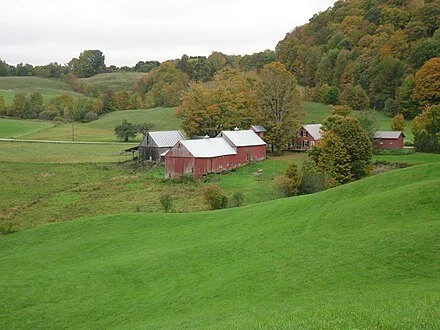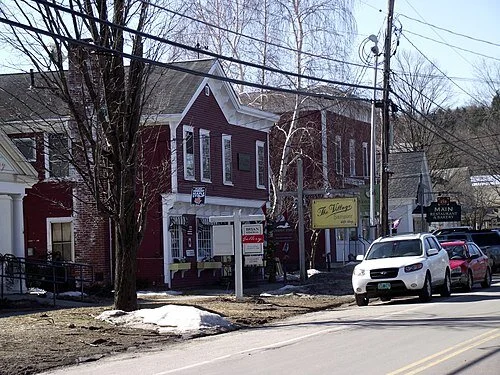From Robert Whitcomb's "Digital Diary,'' in GoLocal24.com:
What will become of cities as more and more work is done on the Internet and more and more stuffis delivered by mail (and drones?). At first glance you might think that these changes will hollow out the cities.
But people seek respite from screens and, for that matter, much paid work will continue to be done off screen. Consider that big growth areas for future jobs include such trades as electricians, plumbers, roofers, linemen, etc.
Seeing people in the flesh, not just virtually, will become more attractive as we become sated with screen life. Indeed, it’s essential for good health. And important decisions will continue to be best completed, and new ideas most cogently expressed, in real encounters. That’s one reason that Manhattan still thrives, in spite of its high costs. You can’t do a merger deal online. You have to meet in person.
Young adults, especially those with children, will continue to move to, or stay in, the suburbs, but future suburbs will look different from ‘50s- and ‘60s-style subdivisions. For one thing, they will have dense, very walkable centers for shopping, distribution and entertainment, and, especially, meeting people, with many smaller specialty stores in place of the vast malls and even vaster windswept parking lots around them. There will be fewer ugly big-box stores because so much of their brand-name stuff will be shipped directly to customers via Amazon, etc.
Highly specialized stores, many with unique items – some of them locally made ---can do well in these suburbs-becoming-mini-cities within broader metro areas. They’ll be staffed by salespeoplevery knowledgeable about their products and services and with long-term relationships with customers.
The Boston Globe reports: “Credit Suisse has predicted that upwards of a quarter of the 1,200 malls in America will close in the next five years.’’
“Today, if you know what you need, you go to Amazon and buy it,’’ Pam Danziger, president of the Pennsylvania-based Unity Marketing, told The Globe. “Where you’re going to find interest is on Main Street and not in these homogeneous same-old, same-old outlet stores. Main Street — where people really know you — that’s where the future of retail is.’’
Read the highly instructive case of toney Manchester, Vt., suffering from the decline in shopping at its many national chain outlets and so now looking to go more local. Please hit this link:
https://www.bostonglobe.com/metro/2017/09/15/there-app-for-this-retail-town-suffers-age-commerce/uArZDDp6UX5lzQlB0nsciP/story.html
Meanwhile, the car culture, even in the suburbs, will probably continue to fade with further proliferation of such ride-sharing services as Lyft and Uber and the expansion and diversification of mass transit associated with our aging population and environmental concerns.
Some suburbs are starting to look like center cities. Consider Tysons Corner, in suburban Fairfax County, Va., outside of Washington. Tysons looms like a mini-Manhattan, with office and residential towers. And then there are the small old cities within broader metro areas, of which there are many in New England – think Concord, N.H. and Portland, Maine. I think that they’ll grow as people seek the conveniences of more than traditional suburban density but without the costs of living in such big cities as Boston and New York, whose centers are increasingly for the rich.
Relatively new suburban places such as Tysons are called“edge cities’’ . But we’ve got what are small old “edge cities’’ around here, such as Pawtucket, R.I., which might have the urban bones to become more lively and prosperous.
Then there are the mid-size cities, such as Providence, Worcester and New Haven. They’ll draw people with their commercial and cultural attractions but won’t have the critical mass to become big cities. Rather, they’ll be ancillaries that will perform some of the services provided in nearby big cities -- e.g., Boston and New York. They’ll continue to lure folks who want to live in real cities but want/need somewhat less density and considerably lower costs than in Boston and New York.
Even Hartford, now an urban disaster area, ought to be able to eventually turn itself around and market its assets (especially its riverfront) as well as, say, Providence has done with its advantages.
Then there will be new mini-metro areas far away from big cities. One is the Lebanon, N.H.-Hanover, N.H.-White River Junction in the Upper Connecticut River Valley. There, the intersection of two major Interstate highways – Routes 89 and 91 -- along with the presence of a well-known university (Dartmouth College) and associated large medical center has for several decades been creating a kind of city – still sprawling but gradually being pulled together by, among other things, public transportation (encouraged by the proliferation of facilities, many of them high-end, for the elderly in areas with major colleges and medical centers).
New England, with its many still well functioning towns and small cities with an almost European settlement pattern, would seem well placed to benefit from the technological and behavioral changes roiling the country, the sprawling , utterly car-dependent metro areas of much of the Sunbelt and Middle West less so. People will continue to seek community. At leastin New England that will be easier to find and/or rebuild than in most of the country.






























